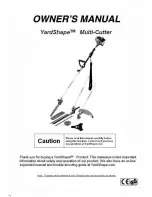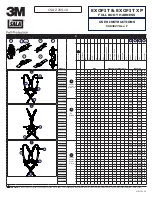
English
21
General Information concerning Earth Measurement
Appropriate Usage
The instrument may only be used under those
conditions and for those purposes for which it
was built. For this reason, the safety references
(chapter 3.0),as well as the technical data in-
cluding environmental conditions (chapter
15.0) must be followed at all times.
The operational safety of the instrument is no
longer guaranteedafter unauthorised modifi-
cations or changes.
Service and maintenance may only be carried
out by an authorised service technician.
4.0 General Information concerning
Earth Measurement
(also refer to term descriptions page 5)
The earth resistance is the resistance between ref-
erence earth and the connecting point of the earth-
ing system. The earthing system is required to bring
each system parts and circuits to a reference po-
tential as close as possible to the reference earth. It
is recommended to perform earth measurements
in systems as lightning protection, telecommunica-
tion and tank parks.
The built-in earth measurement of the UNITEST®
TELARIS Earth is an earth resistance measurement
in accordance with the voltage/current measure-
ment method. The power is supplied by the built-in
batteries. The earth resistance is determined in ac-
cordance with the voltage/current measurement
method. Earthing represents an essential part of a
power supply system. Earthing is required to bring
the individual system parts and current circuits to a
common reference potential close to the reference
earth. Earthing is also used to protect systems from
overvoltage or short-circuit currents.
The earth resistance must be of sufficiently low
Ohm. The limit values are defined within national or
international standards. Earthing or earth resis-
tance is comprised of the earth conductor (equipo-
tential bonding conductor or PE), the earth (foun-
dation earth, rod earth, band earth...), and the earth
spreading resistance, i.e. the resistance between
earth and reference earth. A voltage funnel is formed
around any earth depending on the earth shape and
the surrounding soil. Assuming that the soil is uni-
form throughout with a uniform temperature as well
as uniform humidity, the voltage funnels around the
earth are of concentric shape.
The lower the earth resistance, the smaller the volt-
age funnels. When determining the earth resis-
tance, the voltage drop is measured which has been
generated by a known and constant current applied
to the earth resistance to be measured.
4.1 Influence on Measurement Accuracy
The instrument TELARIS ERDE offers the option to
set a maximum measurement voltage using the UL
25/50V key. The contact voltage limit for medical or
agricultural applications should be set to 25V. For
all other applications, it is advised to set the limit to
50V.
The measurement current supplied by the instru-
ment is above 10mA, thus ensuring a precise mea-
surement result. If, due to the total earthing resis-
tance caused by the voltage which is generated by
the measurement current, the pre-set contact volt-
age limit of 25V is reached, the measurement is only
carried out at the current present at the contact volt-
age limit.
If the 50V contact voltage limit has been selected
the measurement current up to 50V is not limited.
For any measurement voltages exceeding 50V, the
measurement current is limited to 3mA. Thus, a pre-
cise measurement result at a sufficiently high mea-
surement current is obtained, even when encoun-
tering difficult measurement conditions, e.g. stony
soils.
PTDB89860000.qxd 02.03.2006 11:32 Uhr Seite 21












































